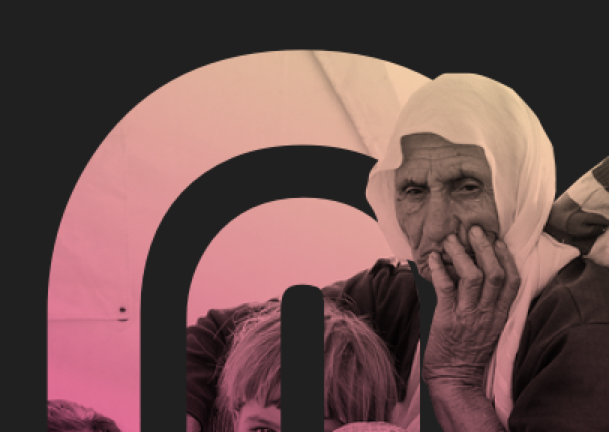Often called the Silicon Valley of the Baltics — and incidentally, the birthplace of Skype — Estonia has disrupted traditional methods of governance and eliminated bureaucratic hindrances by allowing almost all citizen-government interactions to be done online, securely. It’s the first country in the world to use blockchain technology on a national level and to allow foreigners to have virtual residency there for business purposes. This has made them arguably the most digitally advanced nation in the world and saved an enormous amount of time and money.
In 2001, Estonia was among the first countries to declare internet access a human right. According to Statistics Estonia, 89 percent of Estonia’s population is online today, and 99 percent of their public services are digital, reducing government expenditures by the equivalent of 2 percent of their GDP, saving 820 years of paper administration annually.
The extent of digitization also makes corruption difficult to conceal. In the words of Estonia’s former president Toomas Hendrik Ilves, who spearheaded Estonia’s digital revolution, “You can’t bribe a computer.” The only thing you can’t do online is get married, divorced, or buy a house.
How has Estonia, relatively new to independence and with a population of 1.3 million, become a leader in digital governance? “Efficiency was the desire and has really been the fruit and outcome of this digitalization across all different fields of policy and sectors of life,” said Siim Sikkut, Government CIO at the Ministry of Foreign Affairs in Estonia, in a recent International Monetary Fund (IMF) podcast.
After Estonia’s independence from the Soviet Union was achieved in 1991, its economy was left crippled, with no infrastructure, little money, and a small population. They were behind the developed world by at least 50 years, lacking even a telecommunications system.
Rather than rely on legacy technology from neighbors like Finland, they decided to invest in their own information technology. “It was an expensive decision … but the digital space was a level playing field,” said Ilves in a talk he did at a World Bank seminar in 2015. His “eureka” moment came after reading Jeremy Rifkin’s 1995 book The End of Work, which led him to conclude that automation was the only way for Estonia to be efficient and catch up on time lost.
After spending on digital telecommunications, Estonia brought all its schools online by 1997. As early as 2000, Estonia had an “e-cabinet” to help make its cabinet meetings more efficient, and citizens could file their taxes online in five minutes. In 2002, Estonia introduced legal, authenticated, and encrypted digital identities that enabled citizens to perform almost every administrative task online. In 2005, Estonia become the first country to conduct nationwide online voting.

There are some downsides to going digital. In 2007, Estonia was hit with distributed denial of service (DDOS) cyberattacks that debilitated its entire infrastructure. To prevent a recurrence, scalable cryptographic technology, which became what is now called KSI Blockchain, was developed, while retaining complete data privacy. Today, Estonia’s digital ID card and e-services are built on advanced technological solutions, including 2048-bit public key encryption and two-factor authentication.
Not only is the data secure, but owners can monitor who’s accessing their data. “[Users] have full access to log files of state agencies accessing their information, allowing anyone to prove unauthorized access that can be reported to the Data Protection Agency. Serious charges will follow in case of violations,” says Anna Piperal, e-Estonia showroom managing director.
The underlying principle of e-Estonia is the “once only” law, where users only have to provide their information to authorities once. The backbone of this system is encrypted software called X-Road that allows data to be seamlessly exchanged between the more than 1,000 departments using it.
In 2008, the health care industry started making its data available online. Today, 95 percent of data generated by hospitals has been digitized, and blockchain technology is being used to secure medical records. “I go to the doctor, and he can see my medical history online. He writes me a prescription, then I go to any pharmacy, present my ID, and the prescription is there,” says Gregory Lu, a permanent resident and business owner in Estonia.
The use of X-Road has now gone beyond borders, as Finland and Estonia recently developed a data exchange platform, making cross-border e-services accessible to citizens from both countries. Iceland is soon to follow.
Government trust and privacy are contentious contemporary issues throughout the world, and Estonia was no different. “Our president [Kersti Kaljulaid] was asked earlier this year. ‘How did you regain trust in people?’ To which she replied, ‘What do you mean regain? We never lost trust,” says Sandra Särav, global relations adviser at the Estonian Ministry of Economy and Communications.
“Ever since starting with the digitalization process in Estonia about 20 years ago, [our] digitalization [has been focused on user needs]. … Each service we’ve developed … has been a result of contentious dialogue with the public. Trust is built gradually, and we’ve succeeded in not losing it,” concludes Särav.
Because of Estonia’s developed cyberspace expertise, it was chosen to host the NATO Cooperative Cyber Defense Centre of Excellence and the European IT agency. All systems that e-Estonia runs online are open source, enabling them to be used and customized for use by any country or company. “We should have called the Estonians when we were setting up our health care website,” said U.S. President Barack Obama during his visit to Estonia in September 2014.
In 2014, Estonia challenged the concept of traditional residency and “digital borders” by introducing e-residency, where anyone can open a business in Estonia and benefit from low-cost business services and open access to the EU.
“Having e-residency made our company setup quick and affordable. Now we bid for tenders in Europe as a European entity. We route all our non-U.S., non-Asia business through our entity in Estonia. We are in the process of setting up entities in individual markets, but
the e-residency process helped us get a toehold,” says Jacob Puthenparambil, an Indian businessman living in Singapore who got his e-residency in 2017.
Official statistics show that today there are almost 45,000 e-residents from 167 countries. The program averages about 35 new e-residents per week, and sometimes that number can spike to hundreds—almost matching the number of live babies born in Estonia during similar periods. The e-residency program has further expanded by teaming up with the United Nations Conference on Trade and Development to launch “eTrade for All,” which helps entrepreneurs in the developing world gain better access to e-commerce opportunities.
Often referred to as the “first governmental startup,” the e-residency program has helped the Estonian economy grow. “We don’t stand to gain from taxes of e-residents,” noted Sikkut, who pioneered the e-Residency program, in an IMF podcast. Use of Estonian services by e-residents creates jobs and revenue for the country, which is the key benefit of e-residency for Estonia.
When asked why e-Estonia had succeeded, Piperal explained that the “key to success of e-Estonia has been our leadership that is constantly searching for efficiencies in a country with little human and financial resources.” She continues, “Many governments wanting
to be digital cannot let go of legacy systems. … Going digital is not only about comfort and efficiency, but about full accountability and transparency of the state employees and their work, which is not always what they would like.”
E-Estonia is bringing a new angle to the global debate of “web sovereignty” and digital borders by having a system within the EU single market that is regulated, but not by geography. “[Digital] borders are coming down more and more,” says Siikut in the IMF podcast. “The more we lead digital lives, if we still have different rules for digital services in different places, effectively this movement is really hard. We need to connect and improve and harmonize the digital side of the market and also the bureaucracy in order to facilitate the single market the way it was.”
What does the future hold for e-governance? “We’re trying to figure out how to best exploit emerging technologies, such as artificial intelligence … and finding ways to fit it into our legal space without hampering future innovation,” says Särav. “AI is going to change e-governance as we know it, but there are some principles I hope every governance model will look into: interoperable services, strong digital identities, global cybersecurity, and open internet.”











